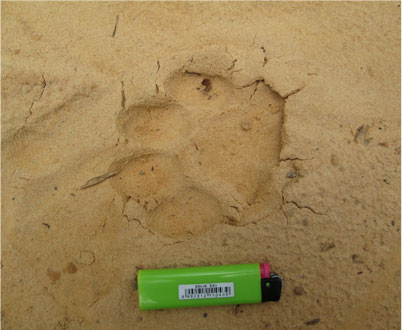
HCV1. Areas containing globally, regionally or nationally significant concentrations of biodiversity values (e.g. endemism, endangered species, refugia). [ID]

The following detailed definition was developed specifically for forests areas, in the High Conservation Value Forest Toolkit (the "Global Toolkit"). The definition can readily be adapted to other types of habitat.
This value is intended to include areas with extraordinary concentrations of species, including threatened or endangered species, endemics, unusual assemblages of ecological or taxonomic groups and extraordinary seasonal concentrations.
Any forest that contains the species identified as HCVs, or which contains habitat critical to the continued survival of these species, will be a HCVF. This will include forests with many species that are threatened or endangered or many endemic species (e.g. Biodiversity hotspots). Exceptionally, it may even be that a single species is considered important enough to be an HCV on its own.
However, there will be many forests that contain rare or endemic species that are not HCVFs because there is not a globally, regionally or nationally significant concentration. These forests should still be managed appropriately, but they are not HCVFs.
Since there is a range of ways in which biodiversity values can be identified, this value has been sub-divided into four elements:
- HCV1.1 Protected areas: Protected areas perform many functions, including conserving biodiversity. Protected area networks are a cornerstone of the biodiversity conservation policies of most governments and many NGOs and the importance of them is recognised in the Convention on Biological Diversity (CBD). Although the processes of selecting areas for protection have varied greatly in different countries and at different times, many are nonetheless vital for conserving regional and global biodiversity values.
- HCV1.2 Threatened and endangered species: One of the most important aspects of biodiversity value is the presence of threatened or endangered species. Forests that contain populations of threatened or endangered species are clearly more important for maintaining biodiversity values than those than do not, simply because these species are more vulnerable to continued habitat loss, hunting, disease etc.
- HCV1.3 Endemic species: Endemic species are ones that are confined to a particular geographic area. When this area is restricted, then a species has particular importance for conservation. This is because restricted range increases the vulnerability of species to further loss of habitat etc, and at the same time the presence of concentrations of endemic species is proof of extraordinary evolutionary processes.
- HCV1.4 Critical temporal use: Many species use a variety of habitats at different times or at different stages in their life-history. These may be geographically distinct or may be different ecosystems or habitats within the same region. The use may be seasonal or the habitat may be used only in extreme years, when, nevertheless, it is critical to the survival of the population. This component includes critical breeding sites, migration sites, migration routes or corridors (latitudinal as well as altitudinal) or forests that contain globally important seasonal concentrations of species. In temporal and boreal regions, these critical concentrations will often occur seasonally (e.g., winter feeding grounds or summer breeding sites), whereas in the tropics, the time of greatest use may depend more on the particular ecology of the species concerned (e.g., riverine forests within tropical dry forests may be seasonally critical habitat for many vertebrate species). This element is included to ensure the maintenance of important concentrations of species that use the forest only occasionally.
[ID]








